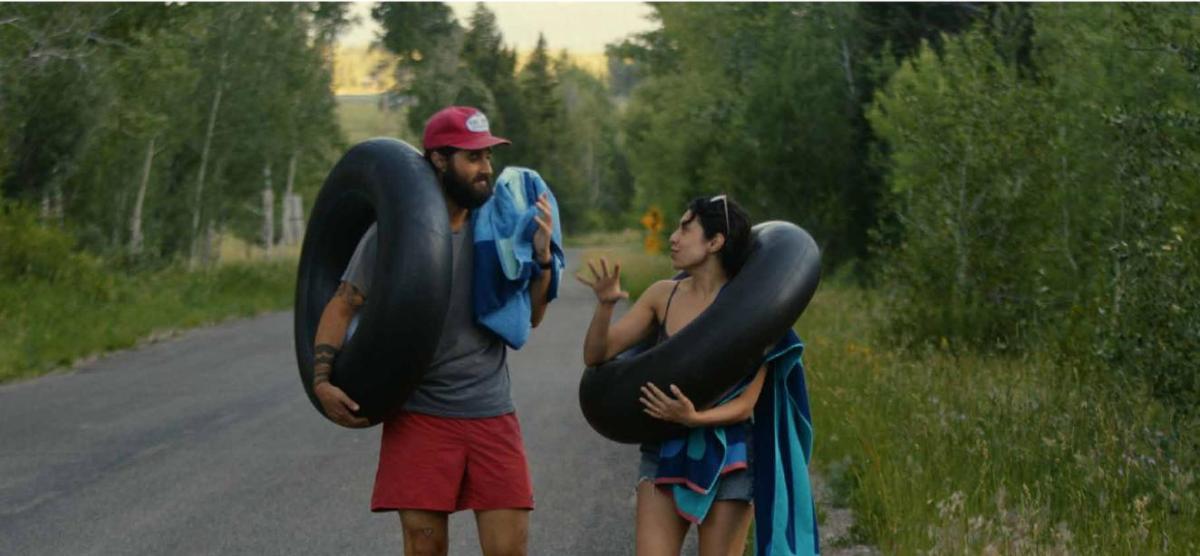
Just when Maryland cinephiles thought 2023 was going to be a bust, along comes the New/Next Film Festival to save the day. The festival, organized by WYPR’s Sam Sessa and programmer Eric Hatch, arrives this weekend at the Charles Theater. It showcases shorts and features from national, international, and local filmmakers followed by lively post-screening conversations. Here are some reviews of a few festival highlights to whet your appetite.
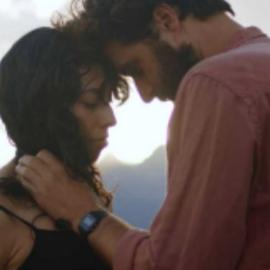
PEAK SEASON
The sneakily wise Peak Season, written and directed by the filmmaking duo Steve Kanter and Henry Loevner, is a movie that challenges our assumptions—and the assumptions of its characters—at every turn.
It takes place in Teton, Wyoming during “peak season”—that is, when most of the rich tourists show up, cosplaying as cowboys with expensive cowboy hats and fringed suede coats.
As the film starts, we meet Loren (Derrick Joseph DeBlasis), in his mid-thirties, living with his dog out of his Jeep. He’s chosen this life, semi off the grid (he has a smart phone, of course; he’s not a cave man!)—and he does odd jobs, mostly nature tours and fly fishing lessons, as well as washing dishes and landscaping, to stay afloat.
Loren has an affable personality and he’s a patient, encouraging fly fishing teacher. He’s also chill in an enviable way. (He reminded me a bit of the friendly drug dealer in High Maintenance.) Everyone he teaches kind of falls in love with him, or at least romanticizes his lifestyle.
Loren will soon meet Amy (Claudia Restrepo), who has come to Teton with her fiancée, Max (Ben Coleman). Amy recently left a career in finance; she found it too stressful. And Max is still living out that stress, constantly yelling into his phone, putting out fires at the office, even working out with a barely controlled fury. Notably, Max comes from money and Amy doesn’t (she’s the child of immigrants). And, like the characters in White Lotus, Max wears his privilege unthinkingly, like it’s owed to him. He’s also so busy grinding that he doesn’t notice that his fiancée is a little lost—she doesn’t know what she wants to do with her life or even if she really wants to marry him. (She’s disgusted when she scrolls their wedding registry, with its $2,000 espresso machines and fancy linens.) When Max is called back to New York on emergency business, Amy is left to her own devises, hanging out in the gorgeous—like, Architectural Digest gorgeous—house they’re staying in and checking out Teton on her own.
She takes fly fishing lessons from Loren and the two instantly hit it off. She teases him for living life like he’s in a “Mountain Dew commercial.” They have an easy, flirty rapport and start hanging out more and more. They go to a bonfire party, to a rodeo, on a hike.
It’s clear where this is all going—until it’s not.
Ultimately, you’ll have to watch the film—which features stunning Wyoming scenery that does, indeed, “look like a screen saver,” as Amy notes—to find out whether Amy stays with Max or takes a chance on Loren, but either way, Peak Season is an affecting, funny, and disarmingly romantic film that will have you planning a trip to Wyoming, preferably not during peak season.
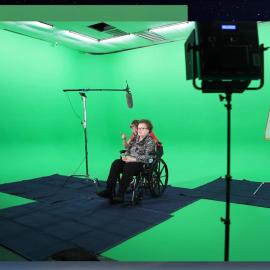
MARGIE SOUDEK’S SALT AND PEPPER SHAKERS
This 12-minute short, created by local filmmaker Meredith Moore, with music from none other than the great Dan Deacon, is an absolute delight. It’s a meta portrait of Moore’s grandmother, Margie, who has collected novelty salt and pepper shakers since she was a girl. Now she has a giant case of the kitschy, funny, and sometimes downright beautiful shakers—penguins, smiley faces, flowers, bicycles, you name it—on display in the nursing home where she lives. Moore happens to be filming Margie during the same period that she’s teaching a class on special effects, so she uses her grandmother’s footage as an opportunity to show off techniques. There’s Margie in her wheelchair, whizzing through a grassy field arced by a rainbow. There’s Margie with golden glitter coming from her hands as she speaks. There’s Margie riding away, impervious to the explosion that has occurred behind her. It’s clear that Margie is not as sharp as she once was—she’s not sure what year it is, for example. But she still gets incredible pleasure from her shakers—and the loving, attentive presence of her granddaughter in her life.
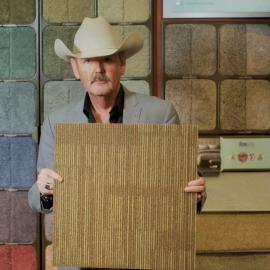
CARPET COWBOYS
For at least half its running time, the documentary Carpet Cowboys is riotously funny, serving up the kind of deadpan humor one might associate with mockumentaries like Drop Dead Gorgeous and Waiting for Guffman. But as the film goes on, it becomes increasingly elegiac, a mournful witness to the fading myth of American entrepreneurship.
We’re in Dalton, GA, the so-called Carpet Capitol of the World. And it’s true, Dalton manufactures 85 percent of the carpeting in America. But corporate consolidation has made private ownership nearly impossible. Most of the smaller carpet makers have been snatched up by international companies.
Still, everyone in the town knows and loves carpeting. They talk about carpeting in poetic terms, as the canvases to our lives, as the silent foundation of human existence. They hang carpeted family portraits in their homes. Even their city-issued trash bins proudly inform us that Dalton is the Carpet Capitol of the World.
The film, directed with equal parts humor and pathos by Emily Mackenzie and Noah Collier, is primarily focused on a handful of people. First and foremost, there’s textile designer Roderick James, a Scottish expat who came to Dalton to live out the American dream. Much like the characters in Peak Season, Roderick is cosplaying as an all-American cowboy. In his case, that means cowboy hats, a denim jacket festooned with the American flag, and an American flag scarf. Did I mention that he designed the jacket (and probably the scarf) himself? Roderick is something of a boaster and a hustler in the vein of a certain ex-president.
There’s also the father and son team of Lloyd and Doug Caldwell, owners of Caldwell Carpet. In one of the film’s funniest scenes, the elderly Lloyd explains how a successful banker friend of his convinced him to put subliminal imagery in the word “CARPET” that’s painted on the company truck. And yup, if you look closely, that’s something rather vaginal in the A and something phallic in the E. He points this out with pride and a hint of astonishment over the ingenuity of his friend. (One thing this documentary proves over and over again: truth is stranger—and funnier—than fiction.) Lloyd and Doug work harmoniously, never acknowledging the unspoken truth—that their days working alongside each other might be numbered.
There’s also Harry Ward, who used to be the biz, but now hates carpeting and has gone in a completely different direction—he collects and lays unusual stones. There’s also Roderick’s musician roommate, Jon Black, who idolizes him. And there’s a pre-teen entrepreneur who invented a non-permanent glue (as featured on Shark Tank!) and seems to be the only one in the town on the rise, albeit briefly.
The scenes that made me laugh the most demonstrated what it takes to confirm that a carpeting is stain resistant and durable. One poor bastard is in charge of pouring feces, urine, and synthetic vomit on the carpet and then cleaning it off. Several others are in charge of walking on the carpet, back and forth on carpeted runways, or up and down a small, carpeted stairway to nowhere—all with looks of exquisite boredom on their faces.
But as I mentioned, things take a turn for the bummer as the town continues to fade in real time. All of Roderick’s self-affirmations lead to nothing—his careful façade of bonhomie and bravado begins to crumble.
Carpet Cowboys is about the elusive American dream—and about the spirit of entrepreneurship that will always manage to find another (carpeted) path to travel.
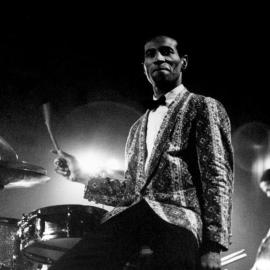
MAX ROACH: THE DRUM ALSO WALTZES
The jazz drummer Max Roach had a unique style behind the kit: He was elegant, regal, he made it look effortless. In fact, he was a virtuoso, with a musicality and technique that were unsurpassed.
“Max to me was heaven,” says saxophonist Sonny Rollins. The aging jazz icon—sporting a wizard-like grey beard and dressed in all red, save for a pair of black sunglasses— is one of many luminaries interviewed in this in-depth documentary from Sam Pollard and Ben Shapiro (no, not that Ben Shapiro), including Harry Belafonte, Quincy Jones, and Questlove. Roach himself is interviewed, reflecting on his career and life, from footage shot by Pollard (a recent Baltimore transplant) a few years before the percussionist died. We also hear from Roach’s adult children and past collaborators, including his still impossibly glamorous ex-wife, the actress and singer Abbey Lincoln.
The story they all tell is the same: Like all great artists, Roach was always evolving. He wanted to challenge what drumming could be, what it could sound like, where it could go.
Early in his career he teamed with Charlie “Bird” Parker, Miles Davis, and Dizzy Gillespie to create the “bebop” genre. This was jazz, but more experimental—more discordant, more noisy, more avant-garde. Later, Roach broke from the quartet to create his own combo, alongside gifted trumpeter Clifford Brown. He and Brown became very close, like brothers, and it took years for Roach to recover when Brown died in a car accident on the Pennsylvania Turnpike.
There was a lot of alcohol and drugs in the jazz scene of the ’50s and ’60s and Roach was no stranger to either substance. He also had a ferocious temper, especially when he was young. More than one person in the documentary describes him leaping out from behind the drum kit to confront a fellow musician on stage, who had angered him for reasons unknown.
But he was an uncompromising, intellectually curious artist. While a lot of his contemporaries were resting on their laurels, Roach was never afraid to take chances. He collaborated with the Harlem Dance Theater, set drum music to the work of Toni Morrison, incorporated gospel music into his albums, treated the drum as a solo instrument, and eventually performed this then-new genre of hip-hop with his godson, Fab Five Freddy.
He also was unabashedly political, creating protest albums before they were a thing. He and Abbey Lincoln wore dashikis when most in the jazz world were still wearing suits and dresses. Lincoln let her hair go natural. Indeed, he was even banned at some clubs for being too outspoken about the racism and inequality he saw, both here and in South Africa.
Max Roach: The Drum Also Waltzes, which is the closing film to this year’s festival, feels like a tribute that’s long overdue, a lively musical portrait of a complex, brilliant man who was fearless in his approach to all aspects of his art—and his life.
